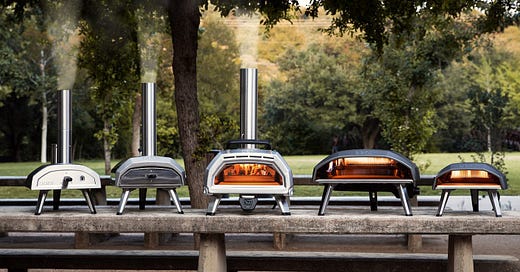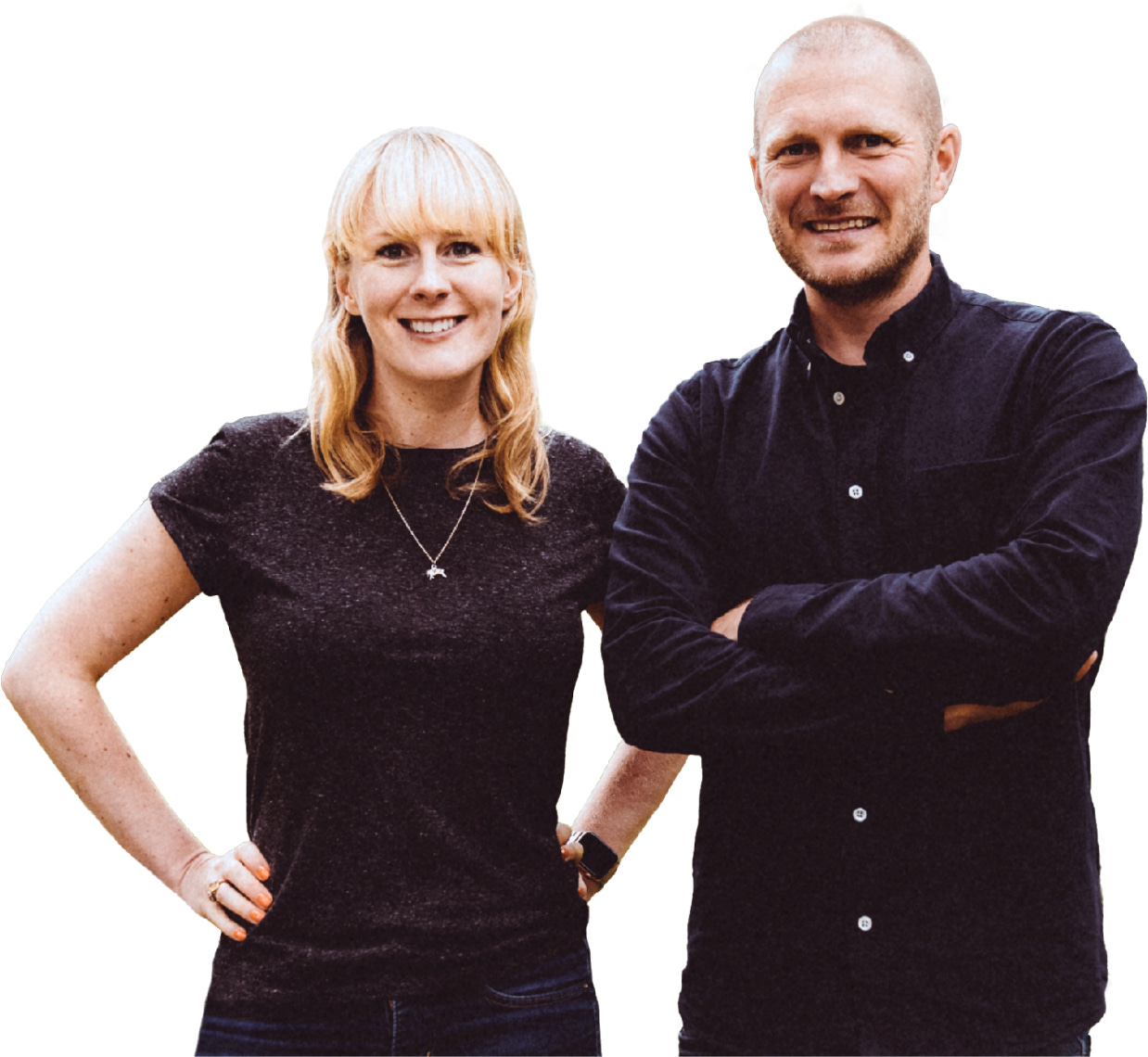Build to Thrive is your go-to for business & real estate insights—stories, playbooks and trends. We spotlight trailblazers & deliver actionable strategies and tools to drive success. No fluff, just useful stuff!
Key Concepts:
#FounderObsession | #ProductInnovation | #CommunityBuilding | #ScalingStrategy | #OperationalExcellence
There’s something about great pizza that just hits different.
It’s the crunch when you slice in. The string of cheese that refuses to let go. The sauce that burns your tongue and makes you go in for another bite anyway. It’s messy. It’s joyful. And yeah—it’s a little addictive.
A couple of years ago, my wife gave me an Ooni oven. I figured it was just a cool little pizza gadget—and I’m always up for new gear. But as a BBQ guy, I had to know: could it sear a steak? (Yes. And it crushed it.)
We fired it up, tossed on some dough, and within 60 seconds—boom—crispy crust, molten cheese, and that wood-fired char that makes your eyes widen like you just discovered pizza for the first time.
We started cranking out pies at home—quick, crispy, and absurdly good. One minute from launch to full-on cheese coma. It’s now a core family ritual. And somehow, pizza night turned into the night.
So how did this little backyard flame-thrower become a global phenomenon?
Let’s dig into the story of Ooni—how it started, scaled, and built a tribe around fire.
It All Started with a Bad Pizza
In 2012, Kristian Tapaninaho, a Finnish entrepreneur living in the UK, was frustrated with his homemade pizza. No matter how good the dough or toppings, his crust never had the right texture. The problem? His home oven just couldn’t get hot enough.
He wasn’t a professional chef. He didn’t have a manufacturing background.
He ran a small creative agency at the time. But he was obsessed.
“I just wanted a tool that didn’t exist,” Kristian told Entrepreneur.
“I wasn’t a designer or engineer—I was just trying to make better pizza.”
So he built a prototype in his backyard—made of scrap metal, fueled by wood pellets, and capable of hitting 900°F. It worked. And once friends tried it, they wanted one too.
He launched the product on Kickstarter with a £7,500 goal.
He raised £30,000 and began shipping ovens by hand.
That was the beginning of what was originally called Uuni—Finnish for “oven.”
From Side Hustle to Scalable Business
Behind the product was a team of two: Kristian, and his wife and co-founder, Darla Garland.
Darla came from a background in education and leadership development. While Kristian focused on perfecting the product, Darla took charge of building the company—its team, culture, and systems.
“We were really hands-on. We packed boxes, answered support emails, did everything,” Darla said in a Vistage interview.
“But we always wanted to create something more than a product—we wanted to build something that brought people together.”
Ooni didn’t raise venture capital.
They grew through revenue—reinvesting profits, hiring carefully, and only expanding operations when demand made it necessary.
Built Around a Tribe
Ooni wasn’t just a pizza oven—it became a movement.
From the beginning, the company encouraged its customers to share their pizza-making stories online. And they did.
Facebook groups. Reddit forums. YouTube tutorials. Instagram pizza nights.
“Our community is where the magic happens,” Kristian said.
“We see people from all over the world sharing tips, competing in bake-offs, and even tattooing the brand.”
This community—called the Ooni community—now interacts across:
A 90k+ member Facebook group
Dozens of YouTube channels with tutorials and recipes
A dedicated hashtag (#ooni) with hundreds of thousands of Instagram posts
Reddit threads packed with technical advice and crust philosophies
The tribe became Ooni’s greatest asset—and their most powerful marketing engine.
Scaling Without Melting Down
As the ovens gained popularity, so did the pressure.
During the pandemic, demand exploded.
Sales jumped from £14M in 2019 to £208M in 2021.
But so did backlogs, shipping issues, and support tickets. Ooni was flooded with orders, and like many companies, their systems were stretched thin.
Instead of hiding, they responded with transparency—emailing customers frequent updates, hiring support teams, and investing in logistics.
Meanwhile, copycats flooded Amazon, selling knockoffs at a fraction of the price.
Ooni didn’t flinch. They focused on:
Improving product design
Expanding fulfillment hubs in the US and Europe
Deepening community engagement
And keeping customer service at the center
Innovation, Purpose, and a Bigger Flame
Ooni continued to expand—on their own terms.
Launched the Ooni Volt—an indoor electric oven for city dwellers
Released the Halo Pro—a commercial-grade dough mixer
Opened offices and warehouses in new regions
Hired a former Breville exec to lead U.S. growth
Became a certified B Corp, pledging 1% of revenue to environmental causes
They’ve grown from a backyard project to a company with over 300 employees, serving customers in more than 100 countries.
And yes—Kristian and Darla still lead the company.
Why This Story Matters to Builders
Ooni’s journey is a masterclass in building from conviction, not convenience.
A reminder that obsession, paired with structure, can scale globally without losing soul.
Applying the B.U.I.L.D. Method to Ooni:
B – Break down the challenge (no affordable and convenient pizza ovens for serious cooks)
U – Uncover the hidden leverage (founder-led R&D + community love)
I – Imagine a different path (bootstrapped DTC, lean ops, brand loyalty)
L – Lay the roadmap (Kickstarter → product flywheel → global hubs)
D – Drive results with structure (new SKUs, support systems, operational discipline)
They didn’t just give people better pizza.
They gave them a reason to fire something up—and share it.
Until the next edition—
Build smarter. Build with purpose. Build to Thrive.
Juan Salas-Romer
If you like this article, you might also enjoy reading these ones:
What is takes to turn a cooler into a $2B dollar brand
What It Takes to Turn a Small Bake Shop Into a $500M dollar business National Phenomenon
What it Takes to be a Disruptor in the Beer Industry
Sources: Fast Company, Modern Retail, Scottish Financial News, The Times UK, Entrepreneur, Vistage Perspectives, The Herald Scotland, Crunchbase, Companies House UK, Ooni.com, Kickstarter campaign pages, YouTube (Ooni official & community), LinkedIn interviews, and verified media interviews with Kristian Tapaninaho and Darina Garland.
Disclaimer: The insights and analysis in this article are based on publicly available information, interviews, and reports from various sources. While every effort has been made to ensure accuracy, some interpretations are inferred and may not fully reflect the perspectives of Kristian Tapaninaho and Darina Garland. or the complete details of their journey.
Feel free to use the chat to share your opinions, comments, future topic suggestions or questions.
Don’t hesitate to pass this article along to someone who might find its content helpful or useful.
About the Author
Juan Salas-Romer is the Editor of Build to Thrive and the President & CEO of NHR Group, a real estate investment and development firm focused on transformative real estate and business turnaround projects. An award-winning investor and business development leader, Juan brings over 20 years of experience driving companies from inception to 7-figure revenues across the finance, real estate, hospitality, and education sectors. His work sits at the intersection of economic growth, innovation, and community impact. Linkedin bio: Juan Salas-Romer
© 2025 Build to Thrive. All Rights Reserved.







